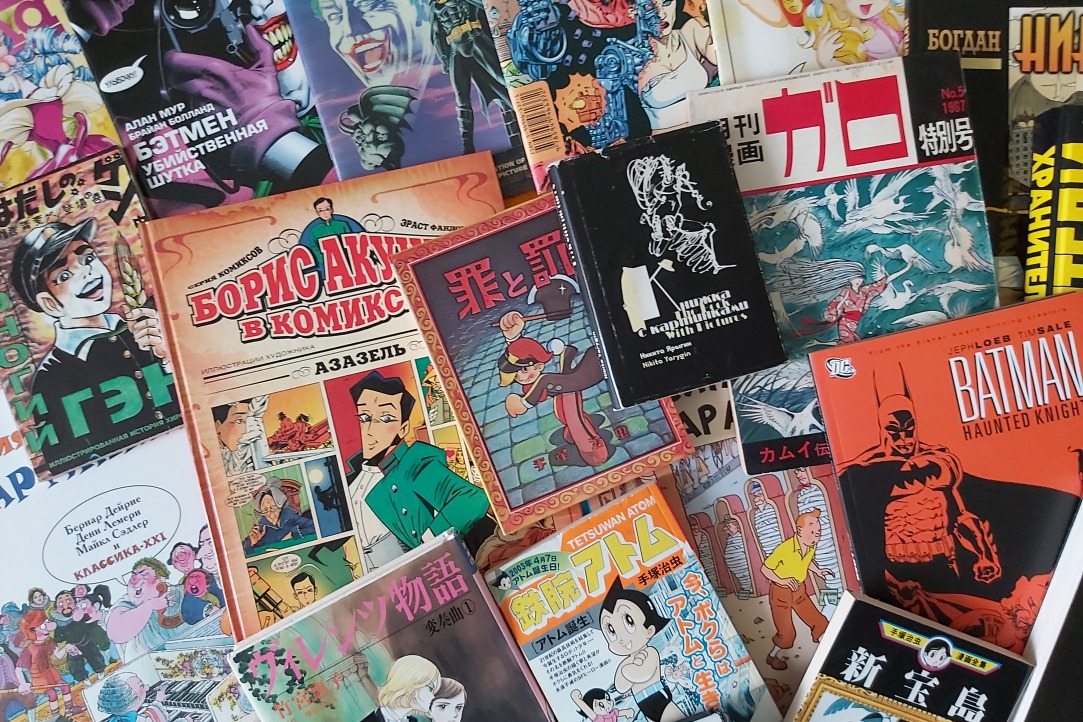Why Serious Scholars Around the World Study Comics

What do Maya ceramics and pictures on 18th-century Russian stoves have to do with comics? What are the specific characteristics of Russian, Asian and American comics? How do comics reflect social issues? These and many other questions were discussed at the 7th Russian Comics Conference ‘The World of Comics’, which was held online in March by the HSE Institute for Oriental and Classical Studies.
The HSE News Service spoke about the event with Yulia Magera, one of the conference organizers. The special guest of the conference was Vo Minh Dang, an international participant from Kwansei Gakuin University.
In 2021, Yulia Magera delivered a course on the history of comics and animation as part of the Visual Culture of Japan subject at the HSE Institute for Oriental and Classical Studies. Her course was the first attempt to launch theoretical manga and anime studies in Russia.
Yulia Magera, Senior Lecturer at the HSE Institute for Oriental and Classical Studies
The primary goal of our conference was to form an academic community that studies comics in Russia. We welcome papers on all sorts of comics (Russian, European, American, and Asian), as well as ‘protocomics’, such as Medieval miniatures, lubok prints, paintings on ceramics, etc. The World of Comics conference is organized annually as a way to promote initiative among Russian researchers and help them to establish contacts with international researchers of comics. In 2021, we successfully ran the Manga Studies session in English, which involved Professor Jaqueline Berndt from Stockholm University, as well as researchers from Japan and Italy.
Why Academics Study Comics
Comics have long been an object of serious academic studies internationally
There are related departments at universities, and numerous monographs on comics have been written. For example, in 2006, Kyoto Seika University became the first Japanese university to offer a bachelor’s programme at its Faculty of Manga. Today, it also offers master’s and doctoral programmes. The faculty trains both art critics (theoretical studies) and creators (practical studies).
Scholars may have all kinds of reasons to study comics, but these undoubtedly include a love of comics, as well as admiration of comics’ visual language and their hidden capabilities
Only in comics can different moments in time be shown in a single frame, such as the moment of the shot and the moment the bullet reaches its goal. Unlike in films, the frames in comics are quite flexible. They can be of various forms and work at the level of one frame, one page, or one double-spread, acting like multiple screens of different sizes.
How Comics Can Promote Well-Being
Comics can help communicate various messages, discuss topical issues in a humorous way, and overcome fears. For example, a manga called ‘Seiri-chan’ was recently translated into Russian: it includes funny and touching stories about an unwanted female guest who comes to women monthly.
There is also a genre of Japanese manga called iyashikei, which means ‘healing’ in Japanese; it aims to heal one’s emotions and be a source of relief from the stress of urban life. These painted stories usually talk about a calm everyday life and its happy moments, while the main action takes place in nature. Such stories bring a feeling of light nostalgia or romance, while any external dangers or tensions are completely absent.
In Russian comics, I would outline two genres: Russian artistic comics and Russian superhero comics
Regarding artistic comics, I would like to mention Olga Lavrentieva’s ‘Survilo’ with its message about a strong woman. In this comic, Olga tells the story of her grandmother, Valentina Vikentievna Survilo, who survived the hardships of war and the siege of Leningrad, but remained a kind and generous woman. For Russian superhero comics, the traditional message of the fight between good and evil is characteristic. An example is the Major Grom character, who fights criminals without really having any superpower.
Soft Power of Animation
Vo Minh Dang talked at the conference about Chinese animation as a new type of propaganda. He presented a paper entitled ‘Chinese Animated Film as a Political Tool: A Case Study of Abomination’.
Vo Minh Dang, Kwansei Gakuin University, Japan
The maritime disputes in the South China Sea began as early as 1982. China is one of the nations that insists on claiming a large part of this territory, and its strategy is not limited to military operations. In recent years, China has been spreading propaganda asserting its claim to the South China Sea through various media outlets, including movies, online games, and commercialized products.
I analyse China’s strategy of covert representations of China’s political claims over the South China Sea in popular media through the example of an animated film—Abominable (2019). Abominable is a joint work produced by DreamWorks Animation and Pearl Studios (a Chinese animation film production company), which is primarily aimed at children but also includes China’s political agenda.
Through the example of my case study, I ask whether this media, which falls into a bracket of ‘soft power’, would be better regarded as a new type of propaganda.
Report by Vo Minh Dang
As an outcome of the conference, a collection of papers will be published, giving the authors an opportunity to present their theses in more detail and add rich illustrative material to their texts.
Yulia Magera
Senior Lecturer, Institute for Oriental and Classical Studies
See also:
Comics: From the Middle Ages to the 21st Century
The 8th Russian Comics Conference ‘The World of Comics’, organised by the HSE Institute for Oriental and Classical Studies, took place online in March 2023. Over the two days of the conference, 44 comics researchers from Russia, France, China, and Malaysia presented their papers on comics history, narratives, visuals, and animation.


